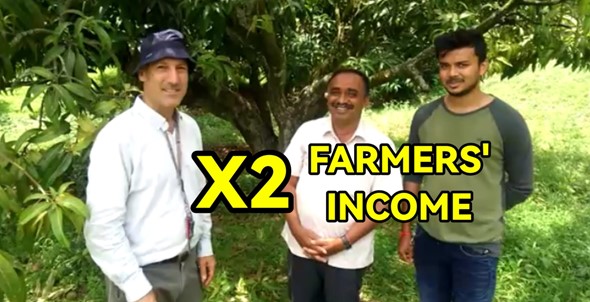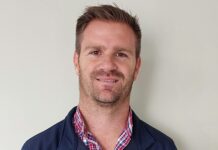By: Dr. Nimrod Israely
“We look and sound different, but under the skin, our mechanisms are similar.”
DIVERSITY IS THE PREMISE
People approach me, saying, “I appreciate and understand your way of thinking, but your conclusions are incorrect”.
Then they continue, “You assume that Africa is like Israel, but that is not true; African farmers are different from the Israeli ones in every possible characteristic, including – history, culture, morals, attitude, motivations, years of work in agriculture, education, narrative, the agricultural area, infrastructure, language, proximity to the market, subject to racism, colonialism, etc.”.
Of course, I agree with this diagnosis; how could I not?
Indeed, African farmers are different from Israeli farmers.
However, does this mean that all African/Israeli/Indian/other farmers are the same?
ZOOM IN TO GROUPS’ DIVERSITY
Interestingly, we find tremendous diversity when we zoom in on unique groups of farmers that seem homogenous.
For example –
African farmers: When you travel around Africa, you can’t ignore seeing the significant differences between countries, regions, tribes, and even within tribes.
Indian Farmers: The first thing any Indian involved in the Indian agro sector will tell you – “The difference between our farmers is unimaginable, not only because we speak nearly 2,000 languages”.
Israel: How varied is the Israeli agro sector? We learn from the composition of the children in my Kibbutz elementary class – we were 13 children, and our parents originated from over 13 countries/languages/cultures…, which include Morocco, Pakistan, Iran, Chile, Poland, Hungary, Germany, Romania, Ukraine, and Finland.
There are many more examples, but those few are sufficient to teach us that differences and diversity are everywhere, even within a small community like where I grew up!
I welcome diversity; we should celebrate, praise, be proud of, and maintain it.
However, some view diversity as an obstacle to elevating small-hold farmers from poverty to prosperity.
This view is gently expressed under statements emphasizing the “unique identity” of each community, and hence the need for individual tailor solutions per community, region, and country.
Moreover, since only the community members know its culture and other unique features, the solution to the community’s dire state must come from within, not from the outside, and God forbid not one of a different skin color.
For those thinking the solution to small-hold farmers’ poverty will come from within, I ask, “There are millions of impoverished communities; why don’t we see any of those pull themselves out of poverty?”
I visited hundreds of rural communities on five continents and experienced firsthand how unique each one is.
This can lead us to one of two conclusions regarding the thousands of impoverished rural communities –
A – The solution is one by one per individual community case. Since there are many such communities, the process may take hundreds of years and cost $ trillions.
B – There is a common denominator to the poverty of all, or at least most impoverished communities, regardless of their culture, language, continent, country, etc. By understanding the root cause (the WHY) of this “common denominator,” we can devise a way out of poverty simultaneously for all rural communities.
The table below outlines various individual challenges. However, those challenges were overcome globally and almost simultaneously, based on the assumption that while we are different, we have much in common. As a result, better solutions became available and accessible to all.
Today, we have many theories relating to agrotech, agrochemicals, seed/plant genetics, soil management, irrigation, logistics, cold chain, marketing, sales, diet, etc.,
However, we lack the theoretical foundation to enable the global creation of prosperity among small-hold farmers in developing economies.
This is the equivalent of trying to reach the Moon without having the theory of gravity or astronomy.
OBSERVATIONS AND FUTURE PREDICTION
Professor Clayton Christensen used to say, “For some reason, God gave us data only relating to historical events.”
Then what do we do if we care about the future?
For ages, we used techniques based on direct observations, such as correlation and extrapolation, to predict the future, e.g., correlating the migration of animals with the seasons and the growth of the grass with the rain.
It was, therefore, received “natural” to correlate farmers’ prosperity with the observation of intensive use of advanced technologies.
Hence, countries, projects, and organizations that wished to eradicate farmers’ poverty provided (pushed) technologies to impoverished farmers.
The expectation was for increased income/profit and less poverty. But, surprisingly, it didn’t happen, and small-hold farmers remained poor.
How can we explain this?
In the previous column, we discussed the catastrophic results of correlating feathered wings with flying, which led to repeated efforts over millennia to fly supported by feathered wings.
We can learn from this that observations and historical data are insufficient to predict the future and shape it.
Therefore, is there a trusted way to predict and shape the future?
PREDICTING AND SHAPING FUTURES
From the beginning of time, humans dreamed of predicting the future.
Today, we have tools, which we call theories, which do much more than “just” predict the future.
Theories help us see an undocumented past, predict phenomena we never imagined existed, and shape the future we want.
Some theories are developed to suit a small range of events, while others relate to universal and diverse systems.
Good theories are characterized by high accuracy, sometimes 100%, and the ability to predict unanticipated events under various conditions.
Unjustly, we relate to theories as theoretical, translating them into unpractical.
Theories sound to us as something kept and intended for researchers in the lab, impractical and inapplicable.
However, theories are, in fact, highly practical, serving as “a statement of what causes what and why” (Clayton Christensen).
For example, try to imagine modern times without the following products and services generated by robust theories –
• Synthetic fabrics, making much of our clothes and shows, are made thanks to theories in chemistry.
• Computers and cell phones exist thanks to theories in electronics and physics.
• Marketing, sales, advertising, entertainment, governments, etc., are service industries and sectors energized by robust theories, such as Supply and Demand.
For our discussion, it is critical to remember that theories are not made only for “simple” events but quite the contrary.
When we think of theories such as Gravity, Relativity, and Evolution by Natural Selection, we see they deal with highly complex systems, each with endless unique components.
Yet, thanks to those theories, we understand WHY things happen and what will cause what.
For example, there are billions of stars in the universe, of which most we know nothing about. Yet, thanks to the theory of relativity, we predicted many phenomena years before they were observed, including black holes, the expansion of the universe, and the different rates at which clocks run in a gravitational field. Like magic, the theory of relativity reveals before us a world we could never explore and put sense into it.
The same stands for the theory of Evolution by Natural Selection. This theory is so inclusive and holistic that it includes all living creatures and helps us understand our past and current events and processes.
Imagine we had studied the mechanism of events one case at a time, with each star and living organism.
We could never have reached a high accuracy level in predicting phenomena and ones never observed before.
Without the ability to predict events, we can’t shape our future.
Hence, theories like “Gravity” enable us to know with high certainty how the future will be based on a simple formula of IF-THEN.
Theories are not only for predicting futures; some also explain the past with extremely high accuracy and certainty, e.g., carbon-14 dating and astronomy.
THE PRICE OF A WRONG THEORY
There is one way of knowing if a theory is correct – you put it to the test.
The Relativity theory, like Gravity, Natural selection, and others, were proven correct and worthwhile after they were tested in the real world and their real-life results were observed and measured as predicted and expected.
In contrast, theories such as “Flat World” or “The Earth is the center of the universe and the sun revolves around it” have been proven wrong when tested.
Remember – theory is only valid after it is tested.
What is the situation with theories dealing with smallholders’ poverty?
For decades, there has been a theory regarding small-hold farmers’ poverty in developing economies, claiming that the source of poverty is due to lack of funds and technologies.
This theory was put to the test many times and always failed.
The most prominent test of this theory was under the AGRA program, where, over 15 years, AGRA provided technologies and funds valued at over $ 50 billion to smallholders in developing economies.
Experts conclude that despite the considerable investment, there were no significant differences between farmers under the programs and control groups.
Some claim that farmers participating in the program face greater economic difficulties.
It is now beyond doubt that the Technology and Funds (to finance the technologies) theory as a means to encourage prosperity among smallholders in developing economies is incorrect/wrong!
The cost and national/global toll of a “wrong theory” is sometimes beyond imagination.
Examples –
The Lysenkoism theory rejected the Mendelian genetics theory in favor of idiosyncratic, pseudoscientific ideas developed and imposed by the Soviet agronomist and pseudo-scientist Trofim Denisovich Lysenko.
Soviet scientists who refused to renounce genetics were dismissed from their posts and left destitute. Hundreds, if not thousands, of others were imprisoned. Several were sentenced to death as enemies of the state, including the botanist Nikolai Vavilov. Lysenko’s ideas and practices contributed to the famines that killed millions of Soviet people; the adoption of his methods in 1958 in the People’s Republic of China had similarly disastrous results, culminating in the Great Chinese Famine of 1959 to 1962. (Wikipedia)
Prosperity Creation through Technology – Today, the livelihood of 2.1 billion people in developing countries depends on smallholders. Based on the assumption that AgroTech will create prosperity among smallholders, hundreds of $ billion were invested over several decades in futile attempts to create prosperity.
We can easily value the $ billions spent on financing technologies for smallholders in several decades.
But how do you value the lives of 2.1 billion people who remained in poverty instead of being now part of the middle class?
How do you value the decades lost to dozens of developing countries?
LIKE MAGIC DREAM
In the summer of 2021, when I considered running the Dream Valley (DV) national-scale pilot with Senegalese mango growers, I knew that there was one way to prove a theory, including the one energizing the Dream Valley concept – to put it to the test.
I wanted to test the Dream Valley theory of prosperity creation for smallholders and was ready to do it under actual, non-favorite conditions.
The odds were stacked against me –
• I wasn’t Bill Gates, and I had little funds.
• I had one month only to apply the project over a vast area (2,500 Ha.)
• I didn’t know the local languages.
• I had minimal familiarity with the local culture.
• I was not an African or Senegalese.
• I had no high-level connections.
• I have never been to the regions and villages where we were about to run the pilot.
• All previous pilots in those regions and villages failed to create prosperity.
• Senegalese smallholder mango growers’ profits, have declined for over ten years!
• It was the first time we tested the Dream Valley theory and model on a large scale.
Nevertheless, after years of developing the DV prosperity creation theory and its operational DV model, I was confident and eager to put the theory and its model to the test.
Three months later, I had the field test results and data as the mango season phased out. At that moment, I knew the DV prosperity creation theory, model, and practices (implementation) were winners.
After over a decade of suffering, Senegal’s mango growers finally doubled their income and even more than doubled their profits.
But that is not all, as Senegal’s national mango exports also doubled, while interceptions of infested fruits or chemical residues were cut down by over 50%.
Theories are tested under harsh and unpredictable real-life conditions, which the DV theory and model have successfully passed.
After the national-scale pilot in Senegal, it became apparent that the DV prosperity creation theory and model can work anywhere as its fundamentals are general, unrestricted by the characteristics that made the Prosperity Creation through Technology theory fail.
Finally, smallholders in developing economies have to their side a powerful theory, like other economic sectors already have for decades and even centuries.
Powerful theories of prosperity creation in the agro sector of developing economies are what developing countries need, and so is the rest of the world.
Consider the aviation case study: Despite millennia of failed attempts to achieve flight while relying on flawed theories, humanity managed to land on the moon quickly once we embraced accurate scientific principles.
This narrative offers us a valuable lesson: When it comes to uplifting smallholders from poverty to prosperity, our failures should not be seen as a lack of effort but rather as a result of employing misguided strategies.
Remember, with the correct theories, we quickly reached the Moon and beyond; imagine the magnificent impact of “correct theories” on prosperity creation for impoverished smallholders.
Want to change the rural community’s development trajectory in your country or elsewhere? Are you unsatisfied with a running rural project or want to plan a new one? Message me +972-54-2523425
Whether you agree or not, share your thoughts with me.









